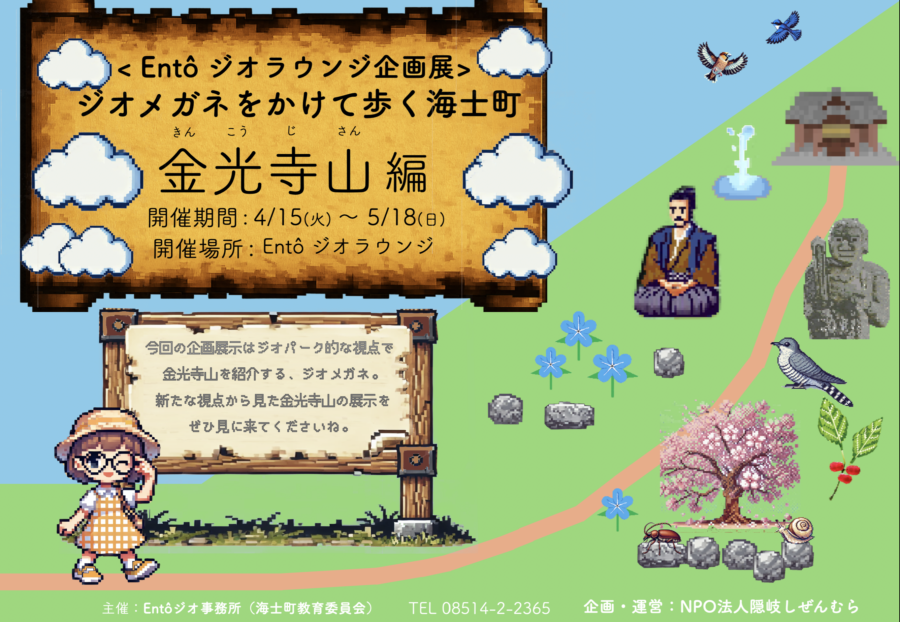2025.06.06
【Report】Walk Around Ama Town with Your Geopark Glasses On: Mt. Kinkō-ji
On April 15 (Tue)–May 18 (Sun), 2025, Entô Geo Lounge in Ama Town was the site of the “Walk Around Ama Town with Your Geopark Glasses On: Mt. Kinkō-ji” temporary exhibit. In line with the Geo Room Discover exhibition room’s concept of “Entô Geo Lounge as a starting point from which guests can go out and experience the real-life locations,” it aimed to inspire those that came to see the exhibit to travel to the locations in person.
Mt. Kinkō-ji is a small mountain northeast of Ama Town and is approximately 160 meters tall. The area has all the geopark themes of Geohistory, Unique Ecosystem, and Lifestyle and Traditions, making it a place of high geopark value. This temporary exhibit introduced elements of geopark sites that had not yet been featured, not just geological curiosities but also touching upon ecological ones, to visitors from all over.
History, Culture, and Mt. Kinkō-ji
Paintings and waka poems were used to provoke people’s imagination about how Ono-no Takamura and Emperor Go-Toba, two people of high status that were exiled from the capital to Ama Town, would have spent their time at Mt. Kinkō-ji. Although they lived in different centuries—Ono-no Takamura in the 800s and Emperor Go-Toba in the late 1100s, early 1200s—both wrote waka poems in the Oki Islands. A large painting of Ono-no Takamura by Kansen Hirose, a famous painter from Ama Town, was also displayed.
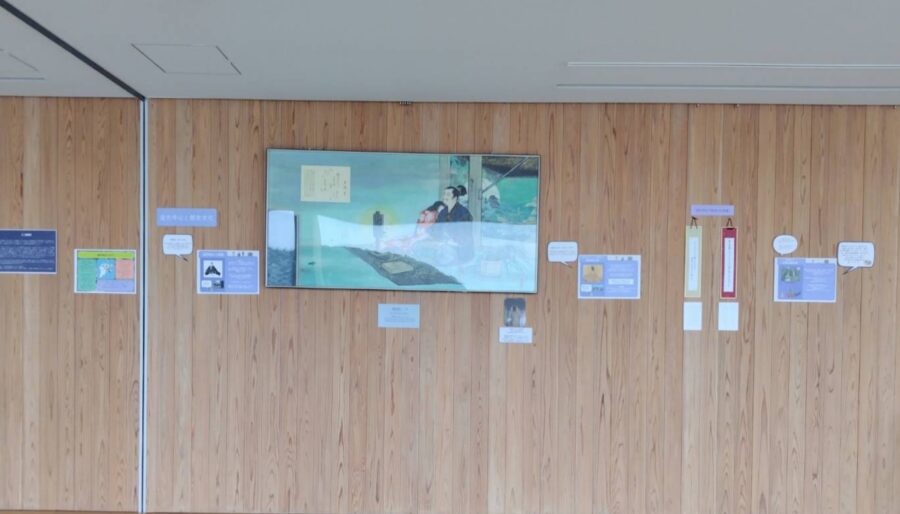
The Formation of Mt. Kinkō-ji
Mt. Kinkō-ji came into being through an eruption that occurred after the mountains in the Dōzen Islands had roughly taken shape. Volcanoes that form incidentally on the flanks of larger volcanoes are called parasitic cones; Mt. Kinkō-ji is one such volcano, and many others can also be found throughout the Oki Islands. Displaying samples of basalt and trachyte, the rocks that Mt. Kinkō-ji are composed of, created a focal point that gave visitors a sense that the land was created through volcanic eruption.
Nature in the Oki Islands
Ama Town is located on an island that was formed roughly six million years ago by volcanic eruption, and it has been connected by land to the main island of Japan several times throughout its existence. The exhibition conveyed how living creatures were able to cross into the Oki Islands from the mainland over these land bridges, and how the current ecosystem, with its various plants that inhabit the area as well as unique endemic species that evolved here, connect to that past.
Among the observable nature at Mt. Kinkō-ji, its wild birds and plants are particularly of note. The Oki Islands are a stopover point for migratory birds where they can rest their wings. Visitors to the Mt. Kinkō-ji area can observe not just the wild birds that inhabit the area year-round, but also migratory birds that vary by the season. Its northeastern location makes it one of the easiest places for birds to gather during spring migrations among the three Dōzen Islands—even within Ama Town.
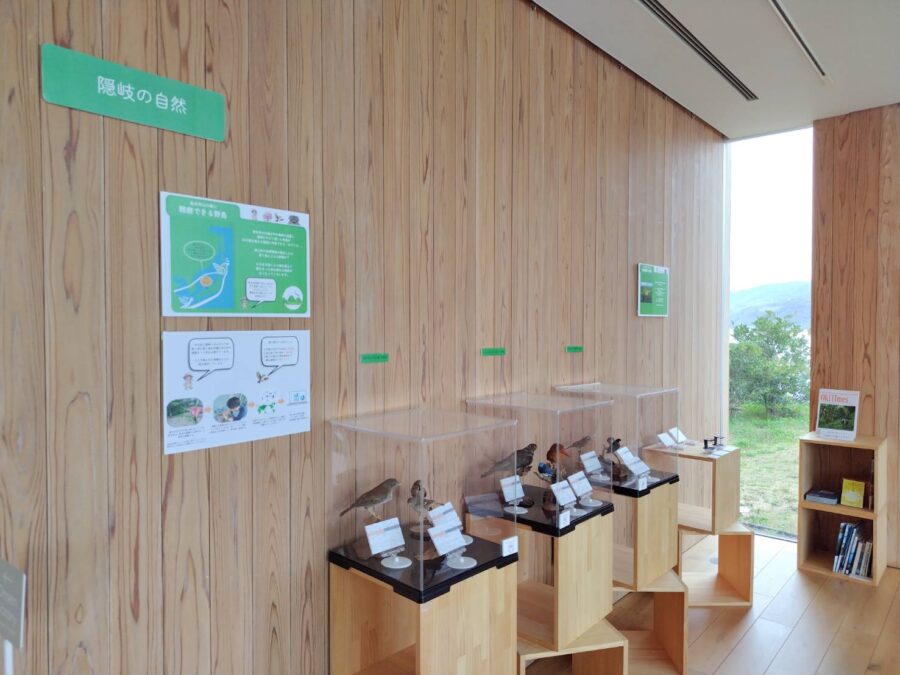
Additionally, plants from northern, southern, and continental biomes, as well as endemic species and those that inhabit various areas, can be seen within the Oki Islands. For example, a specific subspecies of the painted maple (Acer pictum) that can be found in cold areas like Hokkaido lives side-by-side with Japanese bay tree (Machilus thunbergii), which grows in warm areas like Okinawa. Endemic species such as Oki dandelion (Taraxacum maruyamanum) and rare species such as hotarukazura gromwell (Lithospermum zollingeri) can also be seen on Mt. Kinkō-ji. The best time to see them is April–May, when the temporary exhibit was hosted.
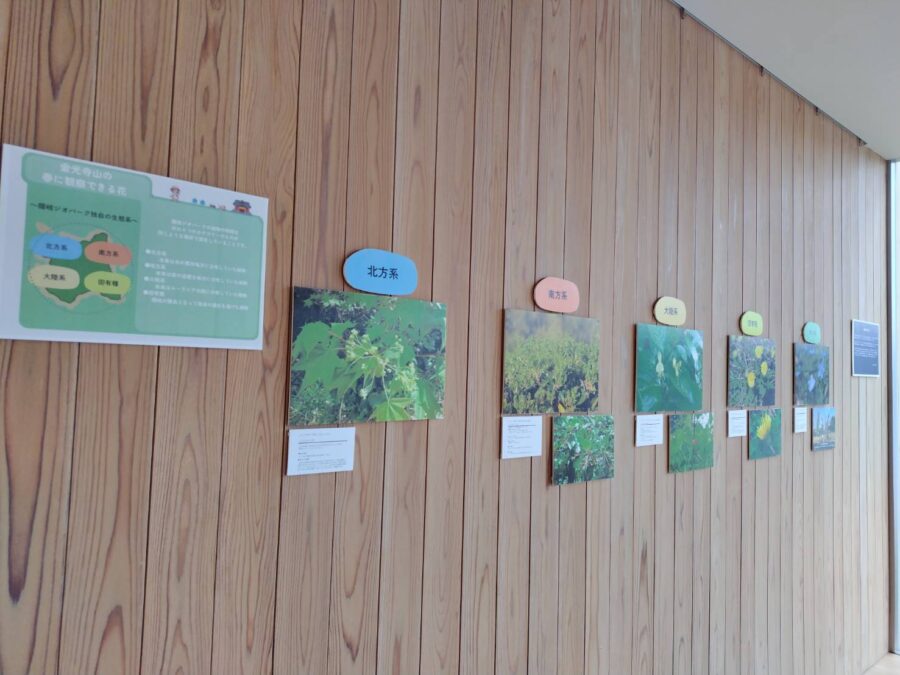
Mountains with temples and shrines are treated as sacred areas and thus escaped excessive development, leaving the plants that give the Oki Islands its essence to flourish. It was a good chance for visitors to feel the connections between the Oki Islands’ formation, its unique ecosystem, and people’s lifestyles and traditions at Kinkō-ji Temple, where traces of Ono-no Takamura and Emperor Go-Toba’s lives remain.
April 18 (Fri): Study session for staff by Fukaya, a member of Oki Shizen Mura, a local NPO
This was a chance for staff members who discuss the exhibits to visitors to deepen their understanding of the exhibits and improve their explanations. After the study session was held, it was put to use in the Entô Walk explanations that occur every day from 4 pm.
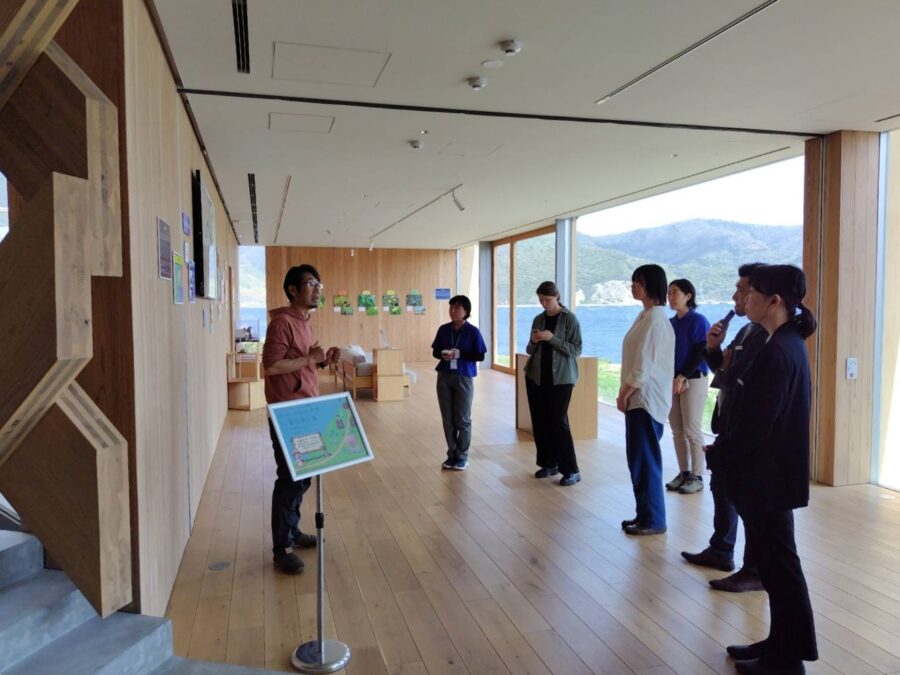
Questionnaires revealed that the main visitors to the exhibit were residents of Ama Town and tourists from outside of the islands. With an age range of 20s–60s, many commented that they knew more about the geology and ecosystem as well as the history and culture of Mt. Kinkō-ji thanks to this exhibit. Furthermore, they also wrote comments such as “The way I looked at things as I travelled around the island changed after learning about endemic species” and “Despite living here for so long, there’s still things that I don’ know about Ama Town, so this gave me a new perspective to enjoy the scenery and life here.”
To preserve this place as both an Oki Islands Geopark site and asset of Ama Town for the future, awareness of conservation efforts is required. By having people from all over come to see this exhibit, they were able to make new discoveries about Ama Town from a different perspective. It can be said that they experienced not just the touristic side of Ama Town, but its beauty and value as well.
Moving forward, Oki Islands Geopark core facilities including Entô Geo Lounge will continue to host exhibits and events that express the value and beauty of the Oki Islands. We hope to see you there.
